When Hollywood wants to highlight that a movie character is on a diet or a neurotic “health nut,” the easiest way is to show them sadly eating a salad, often in the company of others enjoying “regular” food.
In truth, salads can be one of the healthiest dishes you can eat. They’re a great way to feature vegetables of all kinds: raw, cooked, marinated, and fermented. You can also include nuts, seeds, avocados, and even fresh and dried fruits. In a healthy salad, you can find all the nutrients we know can help to prevent and reverse chronic disease.
But, of course, just calling something a salad doesn’t make it healthy. It depends on what’s in it. A heaping platter of grilled chicken and bacon smothered in grated cheese over a few wilted scraps of iceberg lettuce is far from a health food. And the tuna, macaroni, and egg salads that you can find in the deli case at the grocery store bear little resemblance to a true salad composed of minimally processed plant foods.
But even a bowl of fresh vegetables and greens can turn into something unhealthy. What? How is that possible? It all depends on how you dress your salad. An unhealthy salad dressing can negate much of the benefit of that garden salad. So let’s look at the ingredients in many store-bought and restaurant-made salad dressings to figure out what we need to avoid.
Examining Nutrition Labels of Two Popular Salad Dressings
Let’s look at two popular salad dressings, one from the supermarket, and the other from a chain restaurant, to get a sense of how salad dressings can go terribly wrong (from a nutritional standpoint).
Hidden Valley Ranch
First, here’s the nutritional label from a jar of Hidden Valley The Original® Ranch dressing.
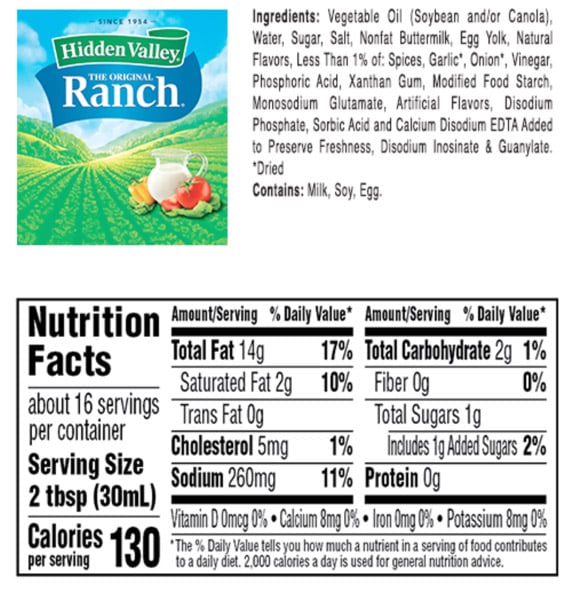
The only ingredients listed that you’d probably want to put in your body are the water, dried garlic, and onion. The soybean and/or canola oil (the first and therefore the largest ingredient by weight) are both high in omega-6 fatty acids (of which most of us get way too much). And as they aren’t certified organic, the oils almost certainly come from GMO plants.
The next largest sources of calories are the sugar, buttermilk, and egg yolk. “Natural flavorings” typically are chemical concoctions that are anything but natural. And hiding in the “less than 1%” ingredients are MSG, modified food starch (also GMO), artificial flavorings, and a mess of chemical names I can’t pronounce.
Olive Garden’s Signature Italian
The second dressing, Olive Garden’s Signature Italian, is slightly cleaner, but is still full of problematic ingredients:
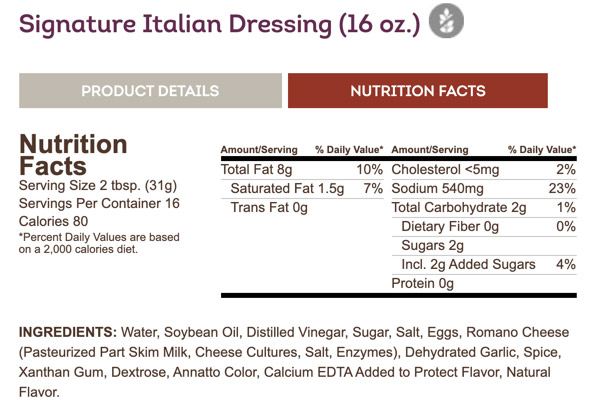
Again, we see soybean oil, sugar, eggs, and dairy products (almost certainly from factory farms), and that sneaky “natural flavor.” Oh yes, and the vinegar is white vinegar, most of which comes from GMO corn.
Both dressings contain dairy, which is high in heart-attack promoting saturated fat. Dairy also contains the protein casein, which has been shown to stimulate cancer development in rodents, increase the risk of heart disease, and may contribute to immune dysregulation and digestive problems. Additionally, most of the world’s human population lacks the genetic adaptation to digest lactose, the primary milk sugar.
And check out the sodium contents of the two dressings. Just two tablespoons of ranch give you 260 milligrams of sodium, while the same amount of Italian delivers a whopping 540 mg. Just that little bit of Italian dressing uses up a fourth to a third of your total healthy sodium allowance. What’s the problem with excess sodium? Too much salt in the diet causes high blood pressure, heart disease, kidney disease, and can lead to type 2 diabetes.
The Trouble with Most Salad Dressings
As you can see from the examples above, both store-bought and restaurant-made salad dressings can contain a variety of problematic ingredients. Some of the top ingredient offenders include:
Sugar
Most commercial salad dressings contain sugar, which is one of the top ingredients everyone seems to agree we eat far too much of and don’t need. Added sugars in our diet contribute to obesity, high blood pressure, inflammation, type 2 diabetes, and fatty liver disease. There are also links between sugar and increased risk for heart attack and stroke.
If you don’t see the word “sugar” in the ingredient list, don’t assume the dressing doesn’t contain any. There are literally dozens of words and phrases that food companies can use to hide sugar on a nutrition label, including high fructose corn syrup, refiner’s syrup, cane syrup, caramel, and Florida crystals. High fructose corn syrup is also usually made from GMO corn. After the name “high fructose corn syrup” started getting a bad reputation, the corn industry petitioned the US Food and Drug Administration to allow them to replace it on labels with the term “corn sugar,” which they felt lacked the alarming negative connotations.
MSG
Another ingredient of concern in many salad dressings is MSG, or monosodium glutamate, a flavor enhancer that food scientists love to use to intensify flavors. MSG acts as an excitotoxin, which basically means that it fires up nerve cells. It’s basically like a drug for your taste buds. Researchers found links between MSG and obesity, diabetes, and asthma attacks. Some people also have a sensitivity to MSG that can result in headaches, chest pain, burning sensations, facial pressure, skin rashes, abdominal pain, and many other symptoms.
Natural flavors, Artificial Flavorings, and Food Colorings
And if you think that “natural flavors” are bad, wait until you see the laundry list of harms caused by the artificial flavorings and colorings that are allowed in the US food supply by the FDA. Some can cause cancer. And they appear to contribute to adrenal and kidney issues, as well as allergic reactions, hyperactivity, and behavioral problems in children.
Serving Size
Oh, and one more thing to worry about with store-bought salad dressings. The suggested serving size is, for most people, a totally fictional concept. The mandated serving size for salad dressing, as you can see on the labels presented in the previous section, is two tablespoons. Most people pour far more than that on their salads. Which means they’re adding a lot more than 130 or 80 calories — and a lot more sodium as well.
What About Homemade Salad Dressing?
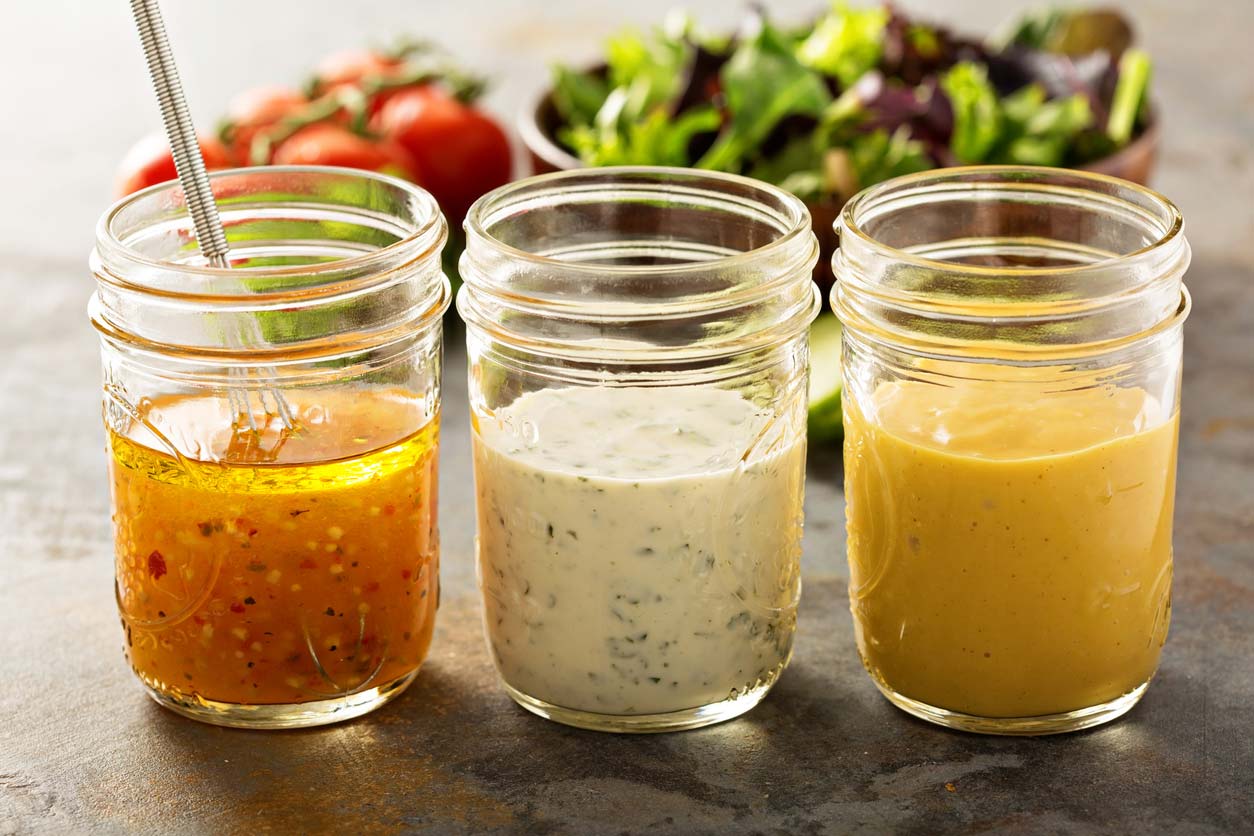
I hope you aren’t getting the idea that all salad dressings are bad. Or that you have to eat your lettuce and carrots like rabbits do, completely undressed. In addition to some clean brands and varieties of organic commercial dressings, there’s always homemade. Not only can you control all the ingredients, but they’re much cheaper than store-bought, and fresher, too.
But even though you’re probably not adding your own red dye #40 or MSG, a lot of homemade dressings still use oil as one of the first two ingredients. After all, the simplest dressing of all is called “oil and vinegar.” And it turns out, that might not be the healthiest option either.
Why You Might Want to Make Oil Free Salad Dressings
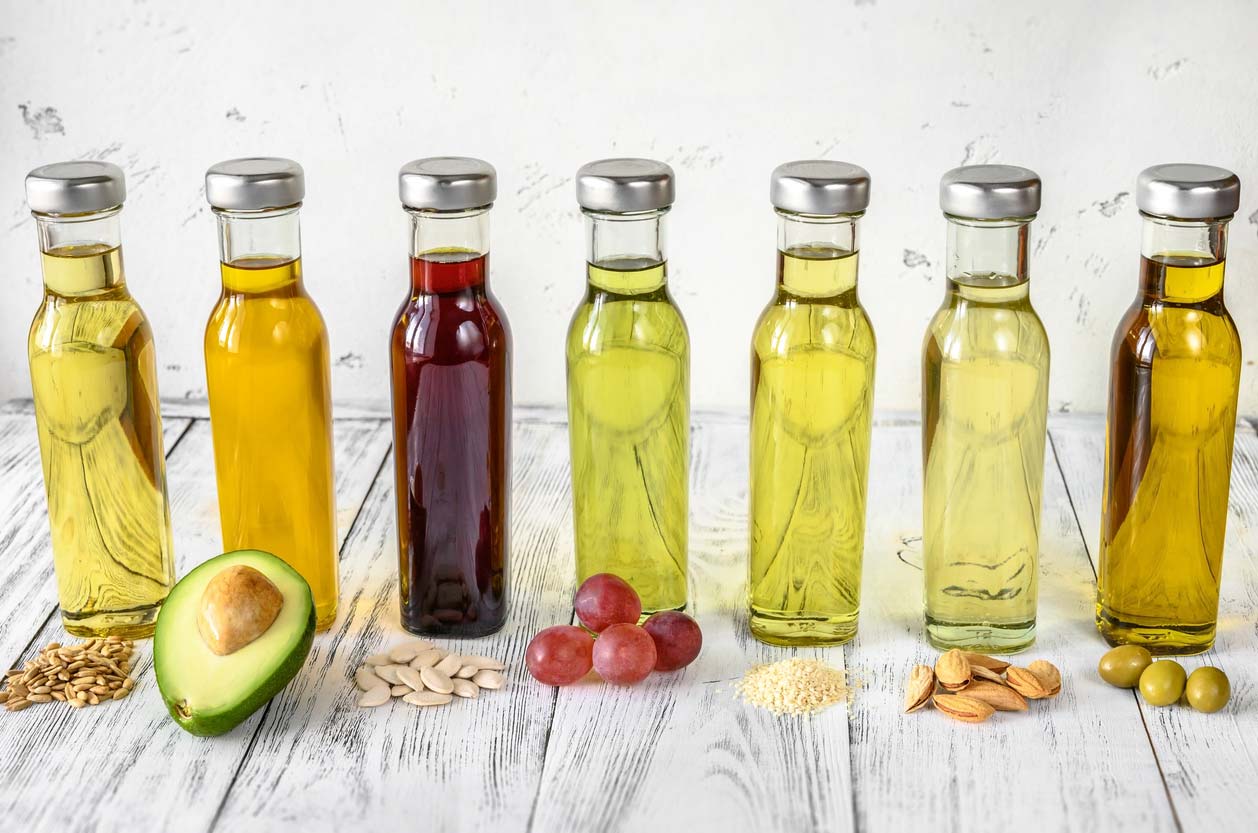
One of the main health benefits of a salad is a very high nutrient to calorie ratio. A pound of raw greens, for example, contains around 100 calories. For a visual, the large plastic clamshell containers of mixed greens at the supermarket weigh one pound. You would be hard-pressed to eat that entire container all at once, especially if you added some carrot shreds and sliced red onion, cucumber, and radish for variety and texture. A more realistic portion of that mixed green salad is a quarter-pound, which would, after adding in some bonus veggies, yield around 60 calories. So far, so good.
Now add your oil-based salad dressing. Let’s stick to the serving size of two tablespoons just for the sake of argument. A serving of dressing that’s 50% oil would, therefore, include one tablespoon of oil, which contains 120 calories. Suddenly your 60 calorie salad is now a 180 calorie salad. And two-thirds of the calories are coming from the oil in the dressing. So while your eyes can fool you into thinking that you’re eating a large salad with a little bit of dressing, your metabolism is actually dealing with a large amount of dressing with a small side of salad.
Oil is — there’s no way around it — a highly processed food. It’s had all of the fiber, protein, and most of the phytonutrients removed from whatever it was made from, creating a product that is pretty far from what nature intended.
Oil is — there’s no way around it — a highly processed food. It’s had all of the fiber, protein, and most of the phytonutrients removed from whatever it was made from, creating a product that is pretty far from what nature intended.
Trans Fats
Another oily problem is, surprisingly, the presence of highly unhealthy trans fats. Trans fats have been known to be harmful to human health since the 1950s. I used to think that trans fats only occurred when oils were fully or partially hydrogenated in a lab or factory. But it turns out that regular vegetable oils like soybean and canola have trans fats as well.
A 1994 study found that some canola oils contained more than 4% trans fat. The comprehensive Harvard Nurses’ Health Study found that consuming trans fats increased the risk of heart attack by a whopping 50%. And while those manufactured trans fats (the ones that are solid at room temperature, like Crisco) were declared unsafe by the US FDA in 2015, and officially banned from the US food supply as of January 1, 2020, you can still encounter trans fats in meat, dairy, and refined vegetable oils.
Unhealthy Fatty Acid Ratios
Many oils contain an unhealthy omega-6 to omega-3 fatty acid ratio. This fatty-acid imbalance is linked to inflammation associated with pretty much all chronic diseases. The ideal omega-6 to omega-3 ratio in the human diet is somewhere between 1:1 and 4:1. But most people eating the modern industrialized diet are getting between 10:1 and 20:1.
Oils such as safflower, sunflower, corn, cottonseed, sesame, and peanut contain no omega-3s at all and range in omega-6 content from 32-75%. Soybean oil has seven times more omega-6 fatty acids than omega-3s.
If you’re going to use oil, the best (or least problematic, depending on your perspective) options are those low in omega-6, low in saturated fats and trans fats, and high in omega-3 fatty acids. For example, flax oil, extra virgin olive oil, avocado oil, and MCT oil.
But, for all the reasons we’ve seen, many people want to make dressings with no oil whatsoever. Fortunately, you can do that without sacrificing flavor!
Ways to Go Oil Free With Your Salad Dressings
Oil can add flavor, moisture, and mouthfeel to a salad. And it can serve as an effective transport mechanism for fat-soluble nutrients and flavorings. But it’s not the only way to accomplish any of these functions. If you’re unsure of what to put on a salad, you can substitute other whole foods that contain fat, or even make your dressings completely fat-free.
Some more whole food alternatives to oil include tahini (sesame paste), nuts, seeds, or beans pureed in a blender with a little water, lemon juice, vinegar, or soy sauce, pureed organic tofu, avocados, and plant-based yogurts.
Healthy Oil Free Salad Dressing Recipes
Check out our delicious oil-free salad dressings below. And have fun dressing your salad in ways that are both delicious and healthy. There’s no reason to deprive yourself of filling, interesting, and super-healthy salads. Or to skimp on the flavor and mouthfeel of creamy, tangy, spicy, smooth, sweet, or umami dressings. The world is your salad — go dress it!
Creamy Citrus Dressing
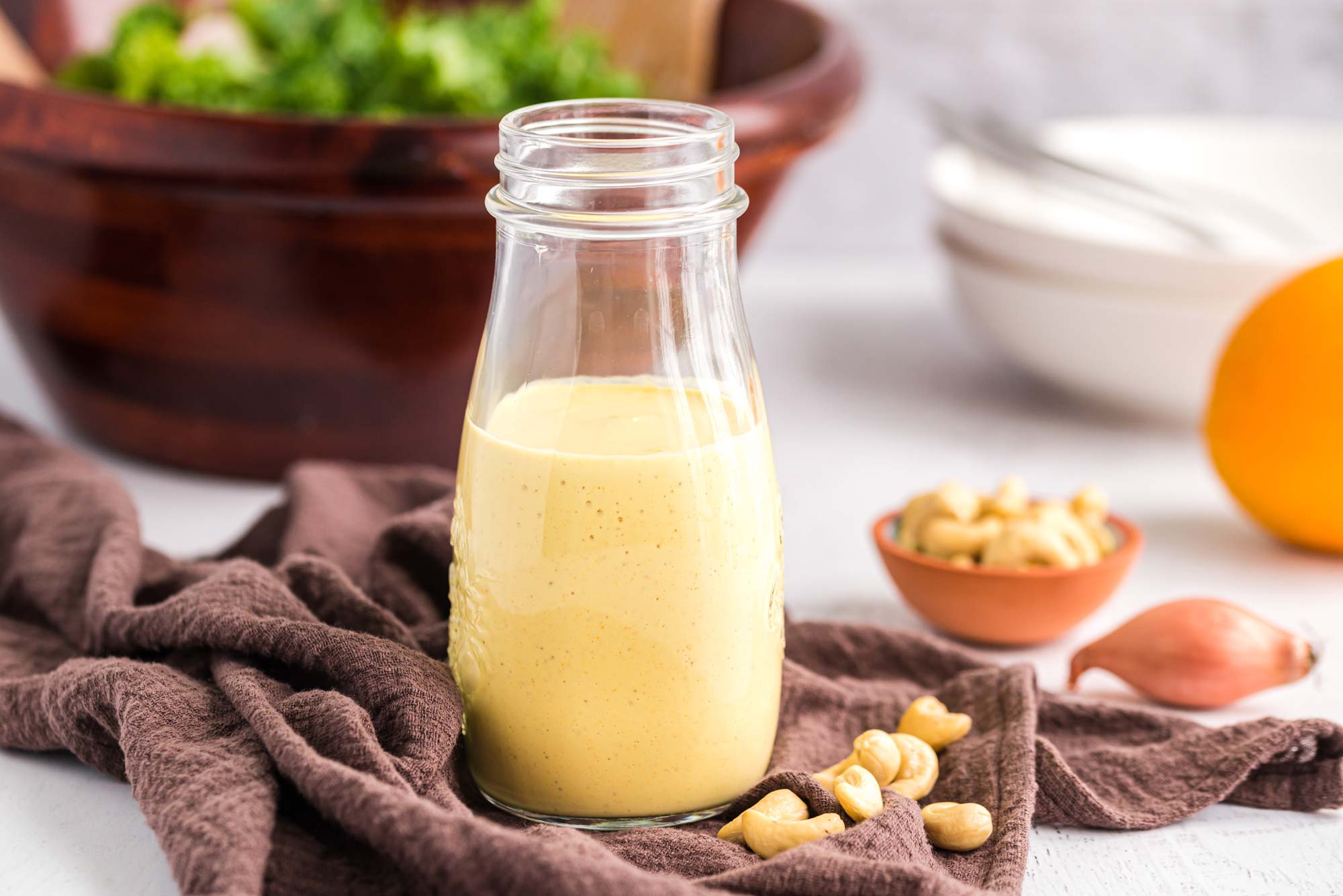
While the citrus elevates the cashews in this dressing, the cashews are actually the rock stars since they replace oil and give the dressing a creamy mouthfeel. This healthy, oil-free salad dressing is a show-stopper on top of salads, steamed veggies, grain bowls, in tacos, or on top of sweet potatoes. Make extra, so you can enjoy it all week!
Green Goddess Dressing
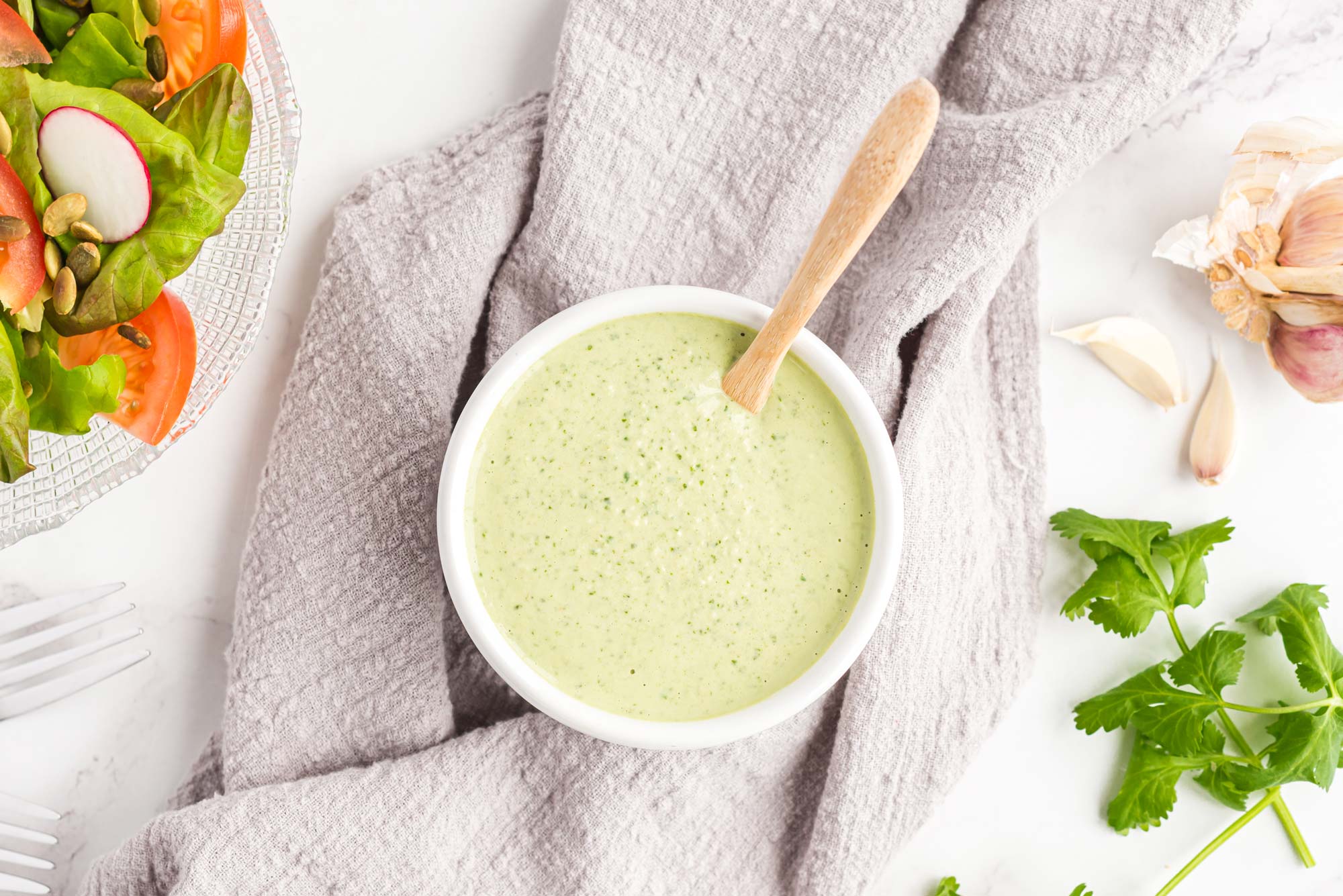
Green Goddess oil-free dressing is bursting with flavor and so versatile! Use it as a salad dressing, on top of a grain bowl, or as a healthy sauce for grilled tofu or tempeh. Tahini is the magical ingredient that replaces the oil. If you haven’t yet experimented with tahini, now’s the time to try it, friends.
Ginger Miso Dressing

If you love Chinese ginger salad, or if it sounds like something you’d like, then you’re going to adore this dressing! The blend of miso and tahini creates an oil-free, creamy, umami, and nutty flavor combination that is out of this world. We suggest doubling the recipe, using what you need, then storing the rest for other meals throughout the week. You’ll thank yourself later!
Creamy Jalapeño Lime Dressing
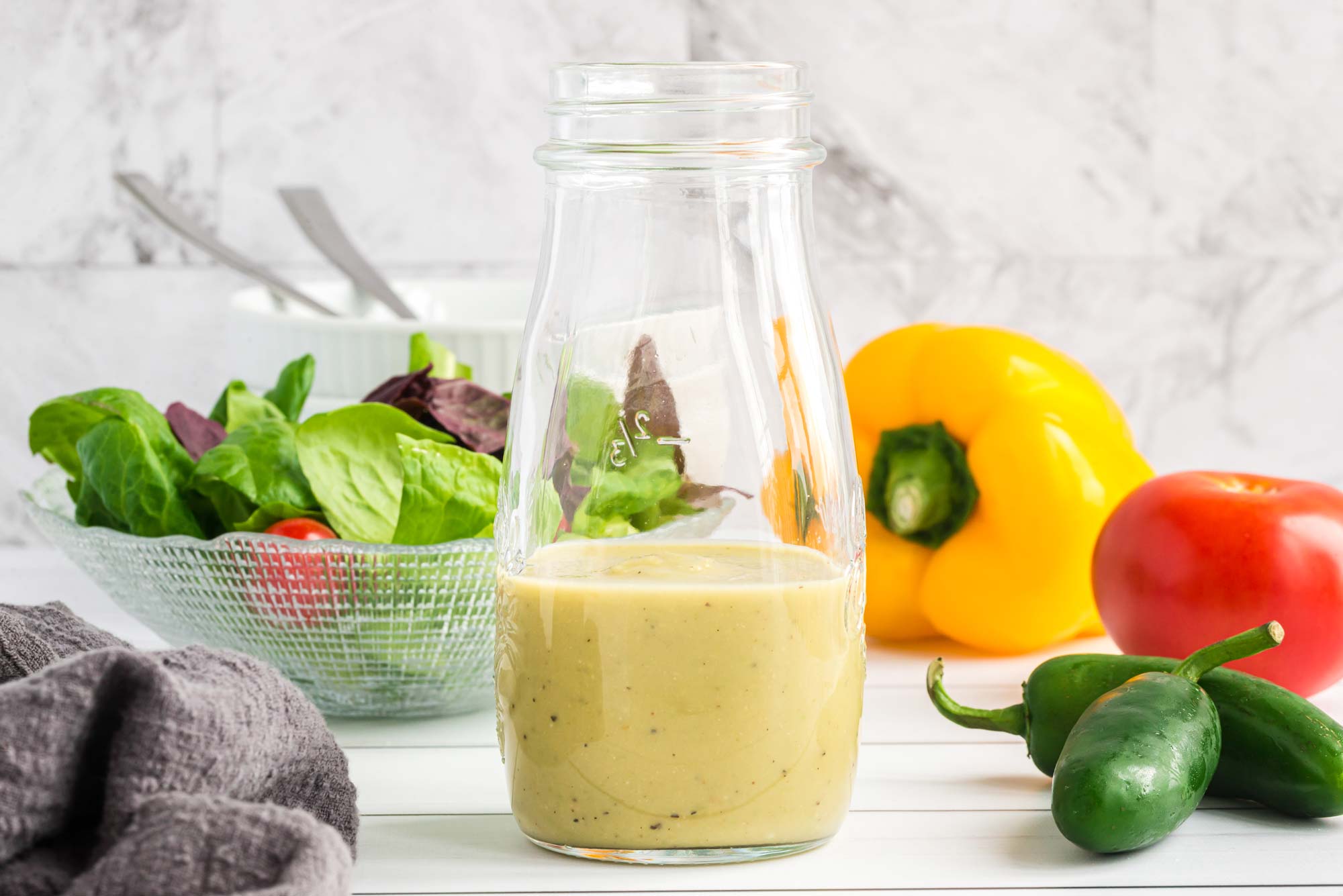
Raise your hand if you love the versatility of beans. (Our hands are high!) White beans give this healthy dressing some texture, as well as protein and fiber. The healthy fat in the avocado not only gives it creaminess but will also help the dressing stick to your greens a bit better. Swap a bell pepper in place of jalapeno if you want to skip the spice — it’s still delicious!
Sweet and Savory Almond Butter Dressing

The combination of naturally sweet almond butter combined with savory tamari and tangy lime makes for an almost drinkable dressing. But save it for your salad because it’s even better mixed with greens! Almonds create a creamy consistency and mouthfeel without the oil due to their healthy monounsaturated fat content. The bonus is that you also get the protein, fiber, vitamins, minerals, and phytonutrients that come with enjoying the whole almonds versus only the oil.
The Verdict on Salad Dressings
Dressings add flavor and moisture to salads. But store-bought brands and restaurant salad dressings may not always be very healthy. Even homemade dressings may contain a lot of oil, which has its own set of issues. If you’re unsure of what to put on a salad, try out oil alternatives at home. And experiment with some of these oil free salad dressings. And ultimately, keep eating salads full of veggies, nuts, seeds, beans, and other whole plant foods.
Editor’s Note:
If you’re looking for pre-made, oil-free salad dressings, you may want to consider Dr. Joel Fuhrman’s line of bottled salad dressings. Each dressing is made with whole food, organic ingredients, and has no added salt, oil, or sugar. You can also rest assured Dr. Fuhrman’s dressings are fully plant-based, non-GMO, and gluten-free. Instead of oils, these salad dressings utilize the healthy fats from nuts and seeds. If you’re interested, you can find out more and get yours here. (If you make a purchase from this link, Dr. Fuhrman’s team will contribute a share of proceeds to support the work of Food Revolution Network. Thank you!)
Tell us in the comments:
- What’s your favorite oil-free dressing or sauce?
- Do you ever use dressing on more than salad?
- Which oil free salad dressings will you try next?

